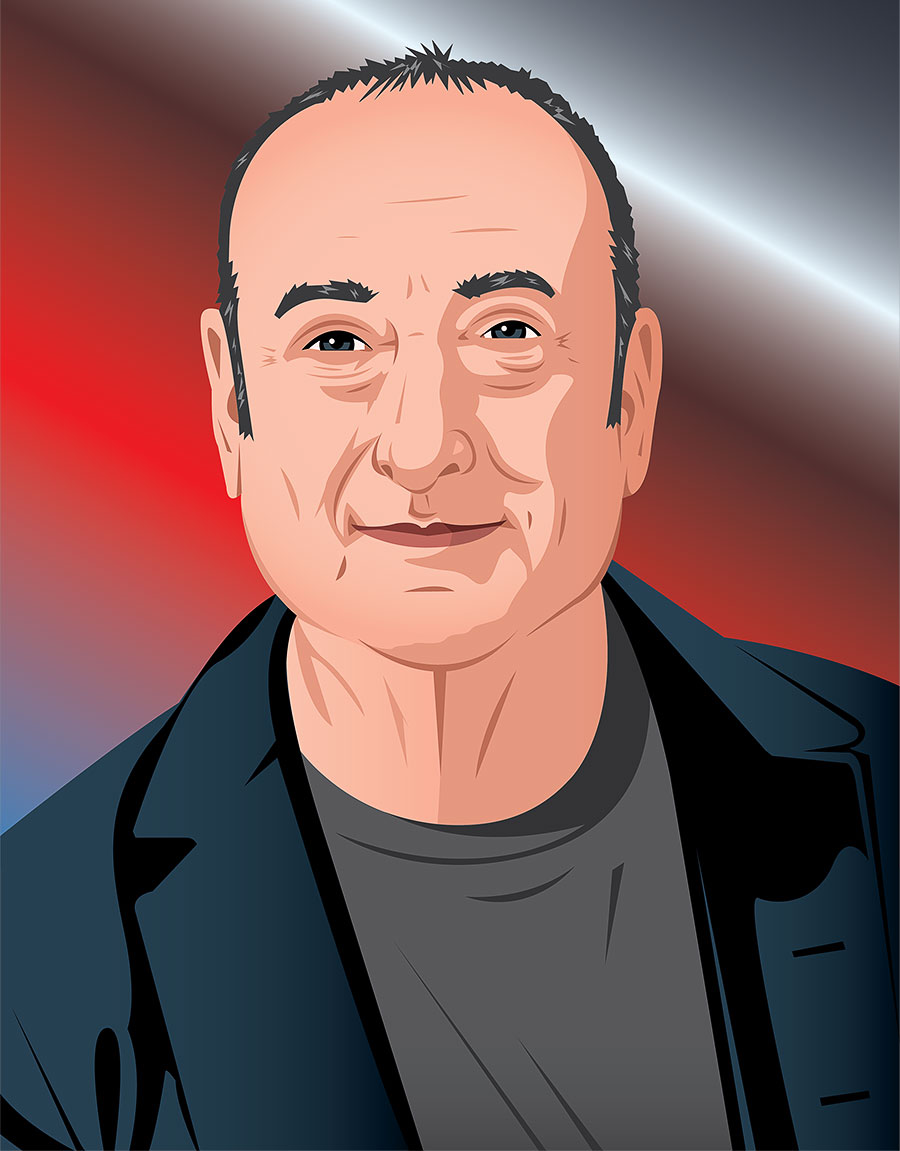■ Metro was the building I could afford. It was rundown, in a rough-and-tumble neighborhood. We were duct-taping the pipes because they’d burst in the middle of a Saturday night. At first, neighbors were unhappy that we were causing such a ruckus, but then they began to realize, Oh, there are people around here at night who aren’t breaking into the cars. There’s a caretaker’s unit in the building, and I lived there with a .38 under my pillow and a cat that chased the rats out. Those first 10 years, it was pure adrenaline.
■ I was one of the first DJs at Smartbar because I couldn’t afford them. It was my record collection. I still DJ at Gman Tavern once a month. People come in and they’re like, “I can’t believe you’re here.” I like doing it. You have to read the crowd. I can look at the bar and say, Oh, this couple just sat down, I’m going to play the Ramones in about 20 minutes. I can just tell.
■ I’ve never been that guy who walks into a DJ booth and says, “Can you play this record?” I have always been like, Let the artist be the artist.
■ The venue in town I loved as much as the Warehouse was the punk club La Mere Vipere. It was also a mixed gay, straight, queer thing, but I didn’t even think about that. It was just the best party in town. That’s where everybody went, including the Ramones. The marriage I was trying to create at Smartbar was the Warehouse and La Mere Vipere, and then put the live piece to it. There was nobody doing that in 1982.
■ When Bob Dylan performed at Metro for the 15th anniversary, we sold the tickets by hand. The first night, Bob’s manager came to me. He’d heard what we did and goes, “Bob wants to say hi to you.” So I got to meet Bob, sit with him, and have a conversation about the album he had just released where he had reinvented himself for the umpteenth time. We talked about the show, the musicians, his guitars and amplifiers, the rugs that he put out. He brought in his own rugs to make it look like a Japanese teahouse or something. It was super cool. I was fanboying out. When I asked Bob why he was playing small rooms, he talked about reconnecting with people and doing it old-school. I was like, “Well, you came to the right place.”
■ By 1967, I’m 10 years old and a full-fledged White Sox fan. It’s what I grew up around in Beverly. My Little League coach was World Series pitcher Billy Pierce. The Sox were part of my DNA. But my father was a Cub fan. I come home from school one day, I look at the TV, and I see this guy, No. 14, playing for the Cubs. I’m like, “I love this guy. Dad, can we go see him play?” So we took the train and the L to see Ernie Banks at Wrigley Field. From that point on, I was a Cub fan.
■ I had tongue and esophageal cancer — stage 4 but treatable. As I neared the start date for my treatment, I got a call from Grant Achatz, who had something similar. He said, “I hear you’re going in. Would you be my guest at Alinea?” So my wife, Jenny, and I went. They spoiled us. We sat down at 7 o’clock and didn’t leave until 10. It was fabulous. For a year, I’d call Grant for advice: “What do you think of this?” Now I make myself available to folks in the same way.



